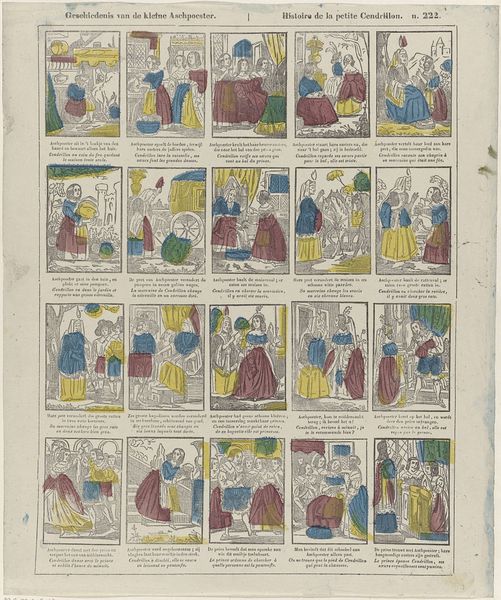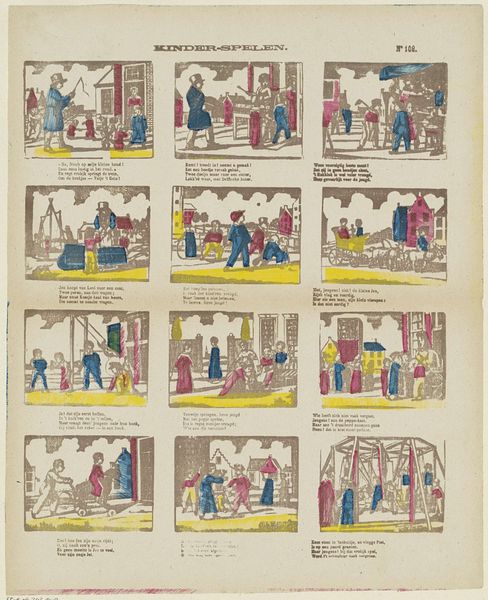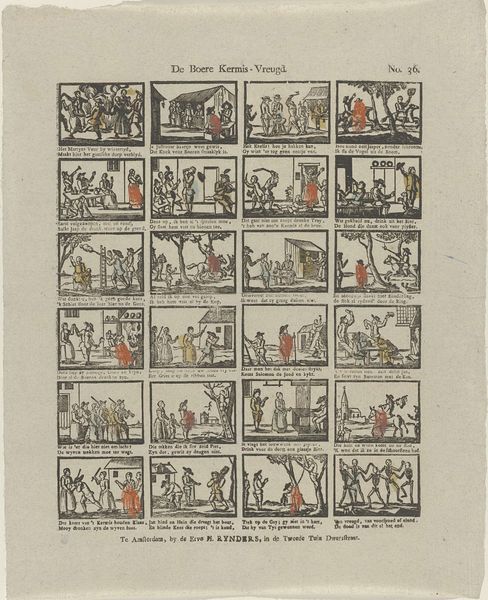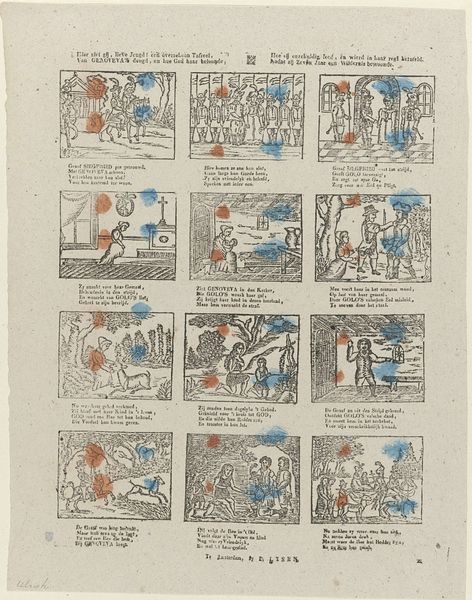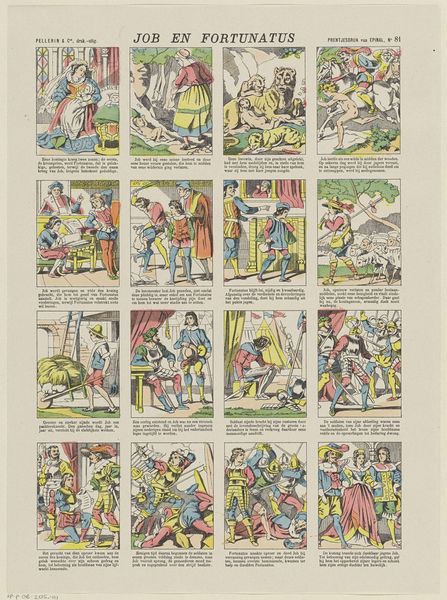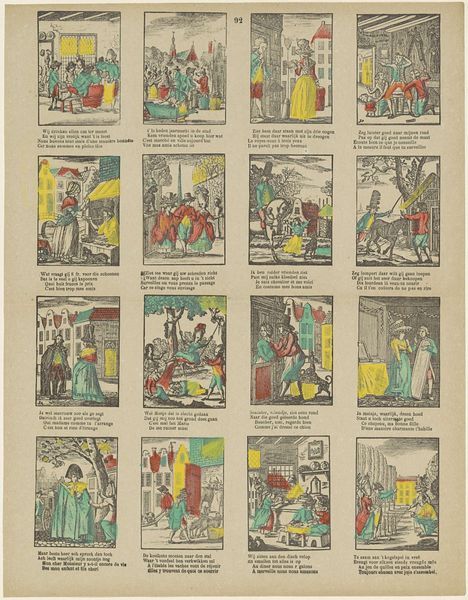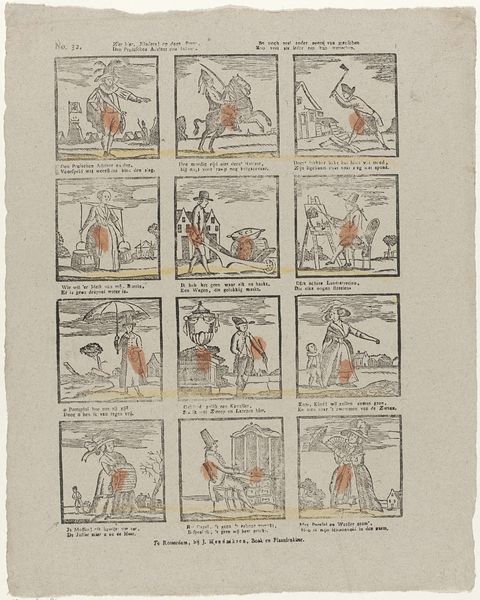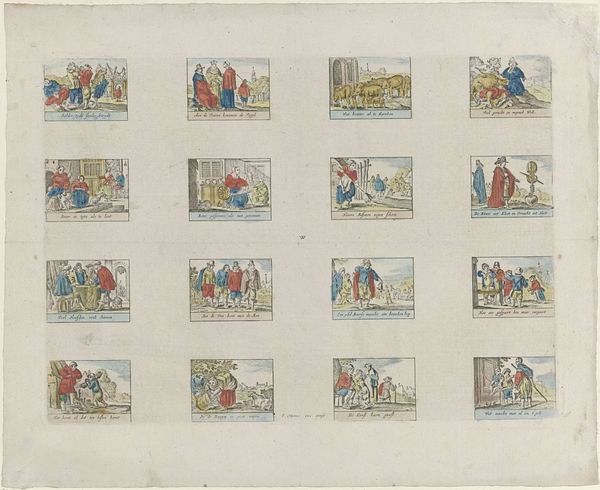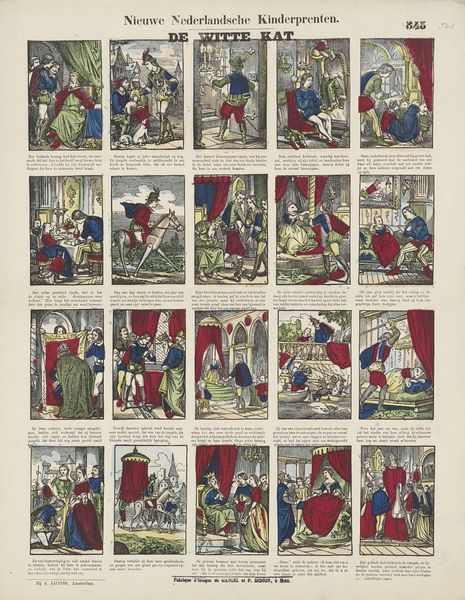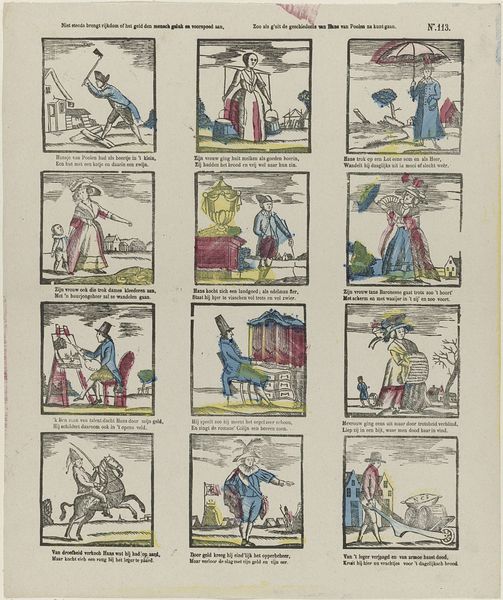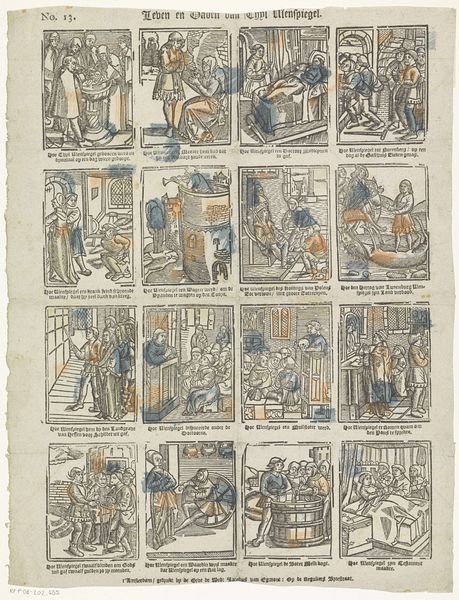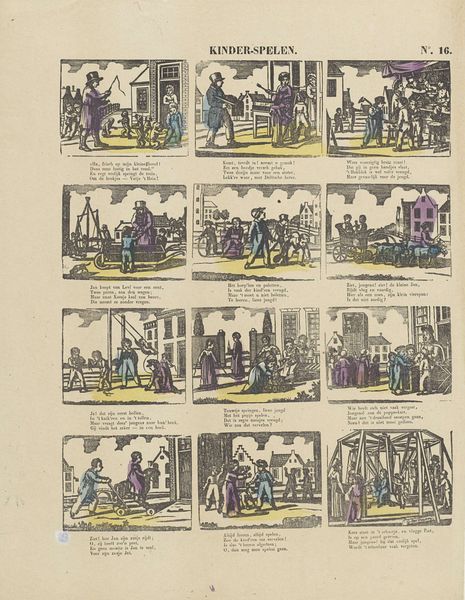
Volg zedekunde, en haar lessen. / Maar schiet in wulpsche harten bressen. / De mode strookt niet met haar wet; / ô jeugd! op 't onderscheid doch let 1856 - 1900
0:00
0:00
hermanusnuman
Rijksmuseum
print, etching, engraving
#
comic strip sketch
#
narrative-art
# print
#
etching
#
comic
#
genre-painting
#
engraving
Dimensions: height 390 mm, width 325 mm
Copyright: Rijks Museum: Open Domain
Curator: This print, created between 1856 and 1900, is attributed to Hermanus Numan. It’s titled "Volg zedekunde, en haar lessen. / Maar schiet in wulpsche harten bressen. / De mode strookt niet met haar wet; / ô jeugd! op 't onderscheid doch let" which roughly translates to “Follow ethics, and its lessons. / But shoot in lewd hearts. / Fashion does not agree with its law; / O youth! Pay attention to the difference". It uses etching and engraving techniques, and the Rijksmuseum houses this example. Editor: What a delightfully busy little thing! I immediately sense a satirical jab at societal morals… Is that right? The characters are all puffed up, ridiculous looking, like a funhouse mirror’s view of the Dutch upper crust. Curator: Absolutely. What's fascinating is to consider the print's function within the social and economic structures of its time. Prints like this would have been relatively accessible, allowing for a broader critique of societal norms, potentially even reinforcing those very norms by making them consumable as entertainment. The visual and textual elements combined make for a potent commentary. Editor: It’s interesting how sequential it is— almost like a proto-comic strip. There's this running thread of moralizing—the tension between ethics and desire… that tension made visible. Makes me think of the kind of casual judgment and irony you find scrolling social media these days. The artist probably relished crafting these little moments, I bet, finding joy in pointing out human foibles. Curator: Precisely. The repetitive nature of the panels draws attention to the industrialized aspect of printmaking and how meaning could be disseminated. Furthermore, the subtle coloring probably involved a whole workshop contributing their labor to each print. Each person had a distinct place in the making. Editor: This feels very true somehow. The combined perspectives—satire, social observation—that’s what great art boils down to, no? Finding the human in the abstract! It seems as true then, in 1880-something, as it does today. Curator: I completely concur. The way the artist leveraged mass production to broadcast ethical quandaries of youth and decorum renders this print deeply fascinating from a socioeconomic standpoint. Editor: I am taking with me today, and every day, that great art should not follow the herd and embrace our quirky nature in every manner.
Comments
No comments
Be the first to comment and join the conversation on the ultimate creative platform.
